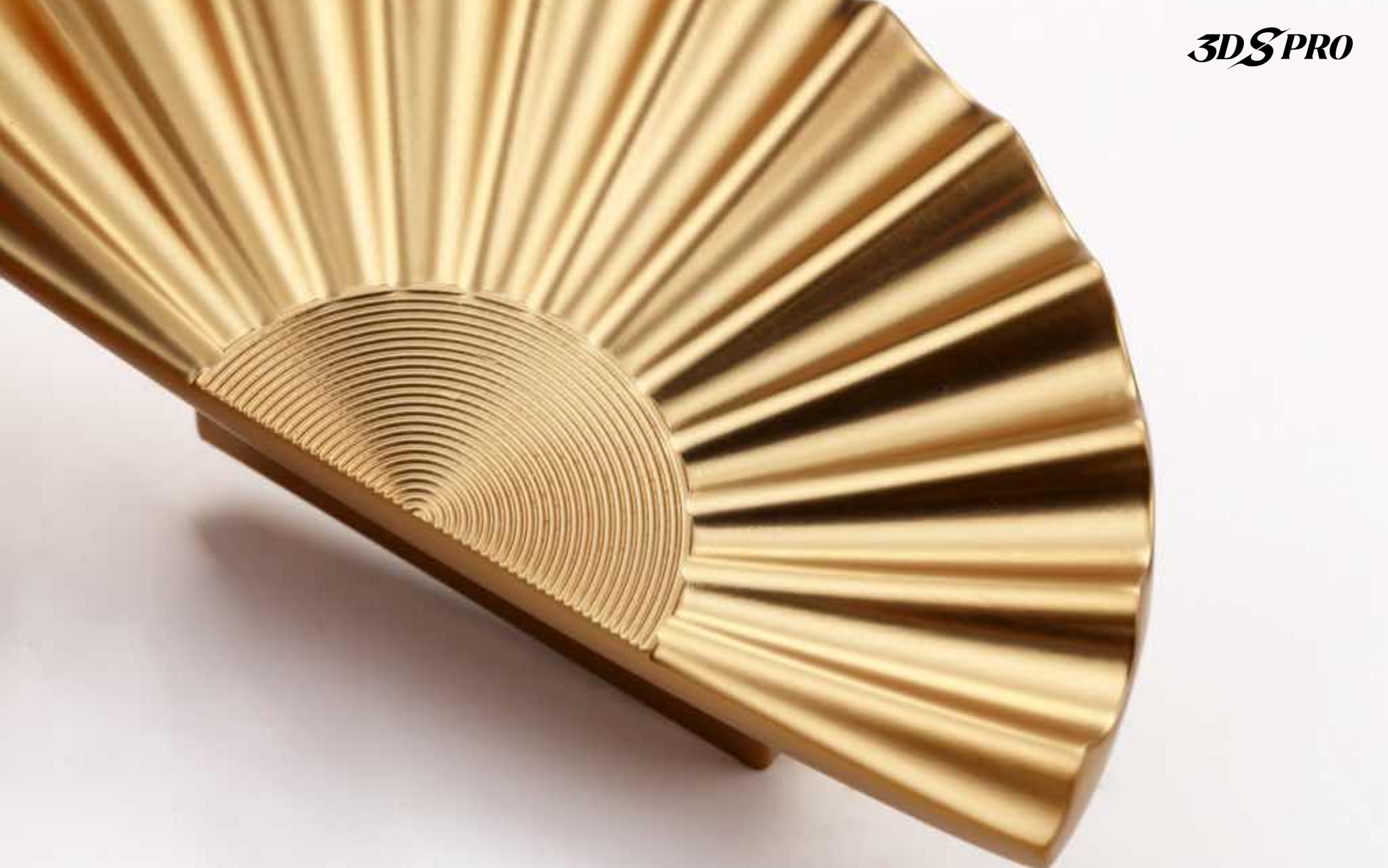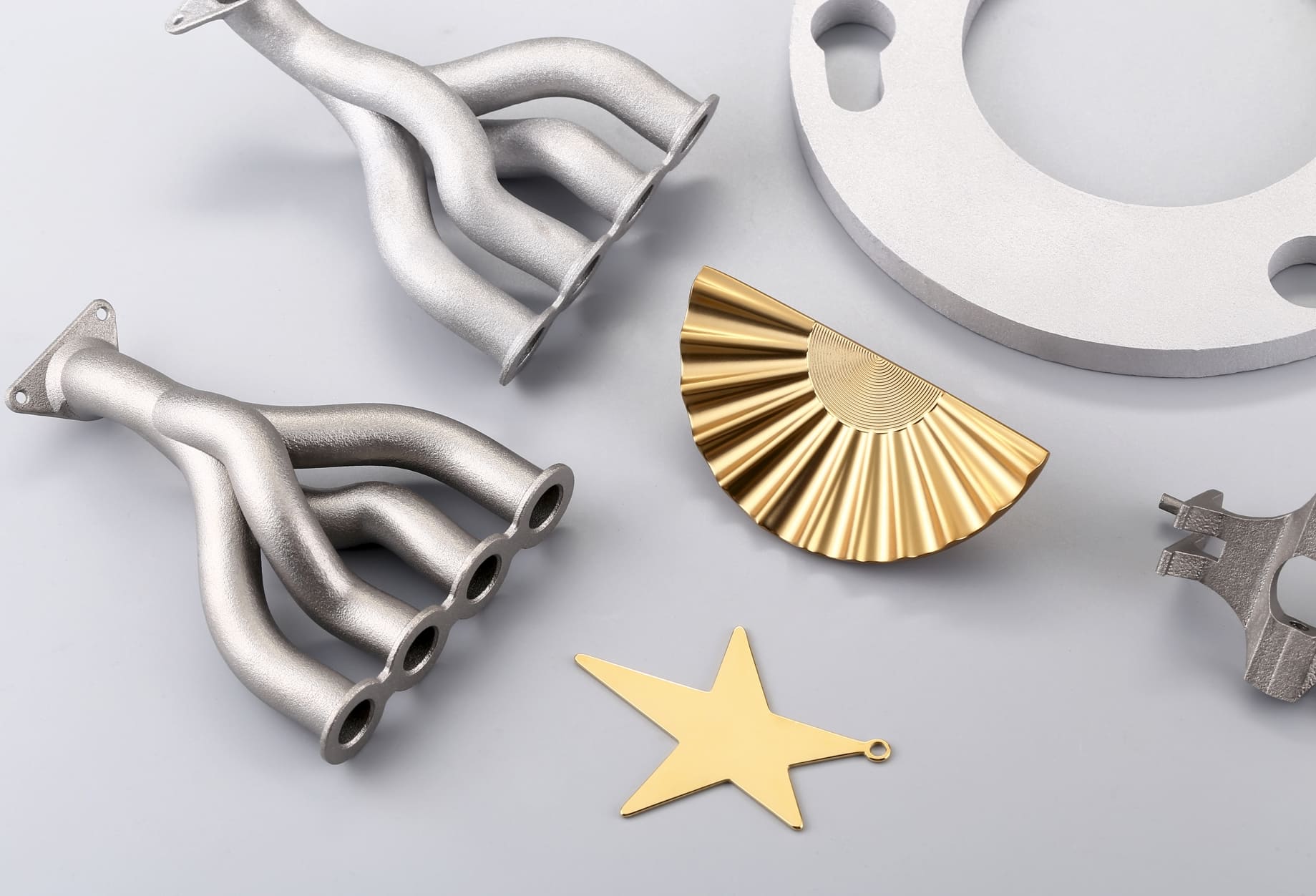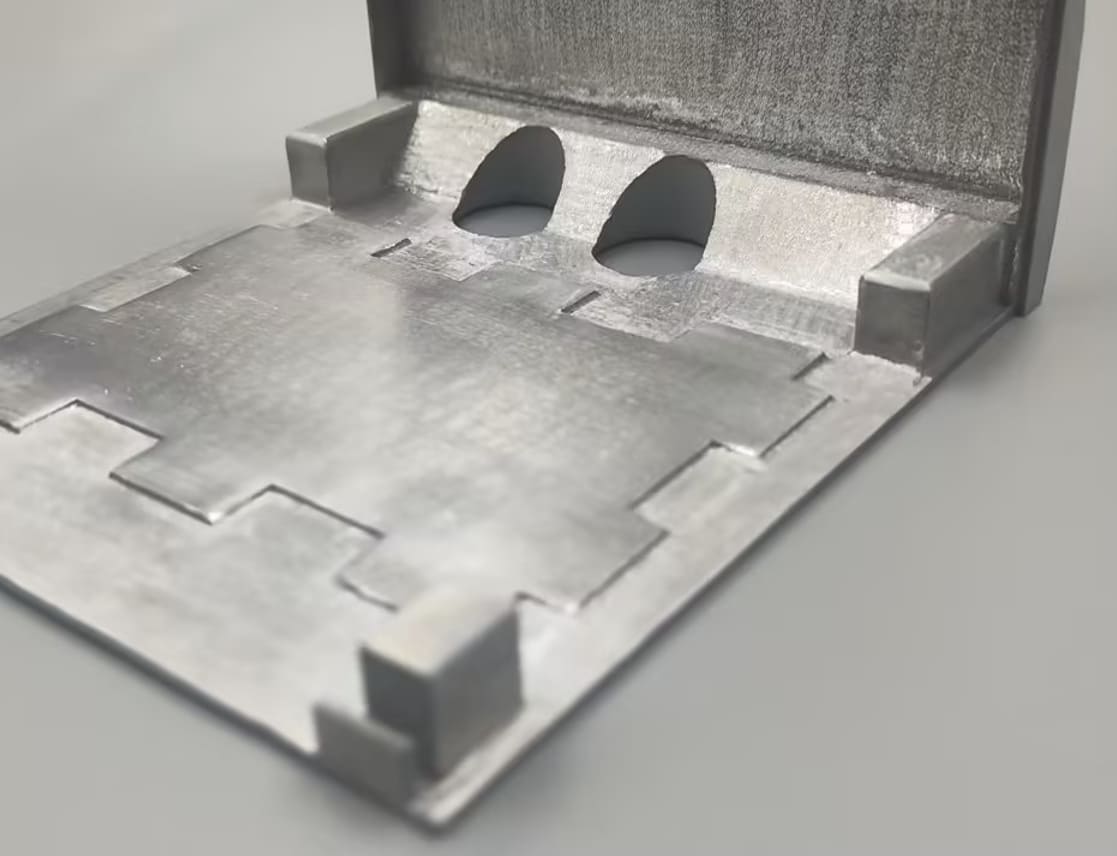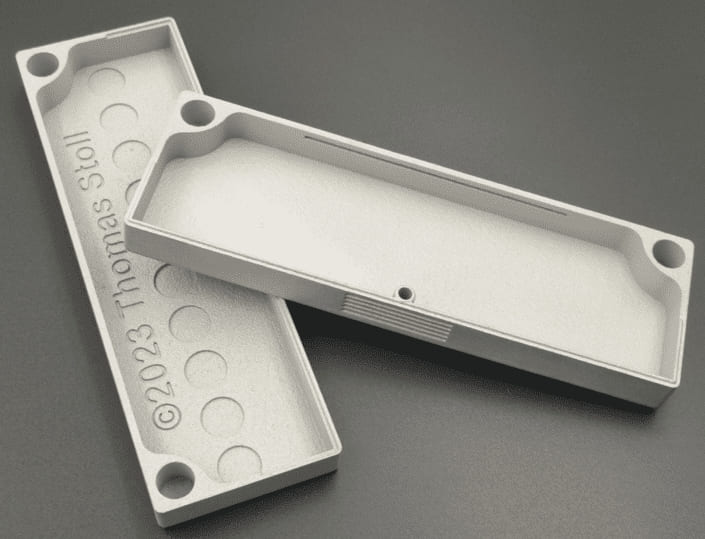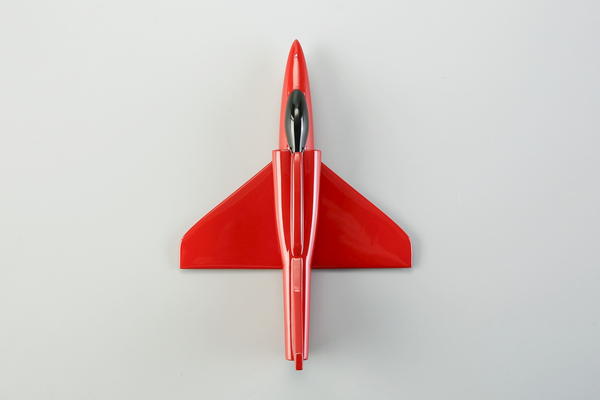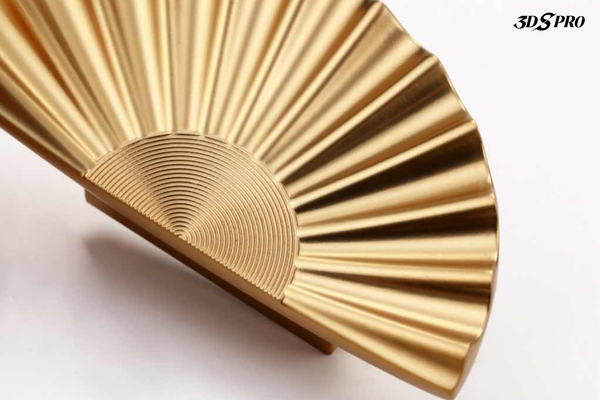Metal 3D Printing vs Metal Casting: Process
Metal 3D Printing
Metal 3D Printing is a process that creates objects by fusing metal particles layer by layer using high temperatures derived from lasers or electron beams. The two main techniques within this category are Selective Laser Melting (SLM) and Direct Metal Laser Sintering (DMLS). Both methods involve spreading a thin layer of metal powder and selectively melting it with a laser to build the part layer by layer.
Metal 3D Printing Process
The build chamber is filled with inert gas to minimize oxidation and heated to the optimal temperature. A thin layer of metal powder is spread on the build platform, and a laser scans the cross-section, fusing the particles. After each layer is scanned, the build platform moves down, and a new layer of powder is applied. The process is repeated until the part is complete. The finished part is removed from the powder bed and may undergo additional steps like removal of supports, heat treatment, and other surface finishing.
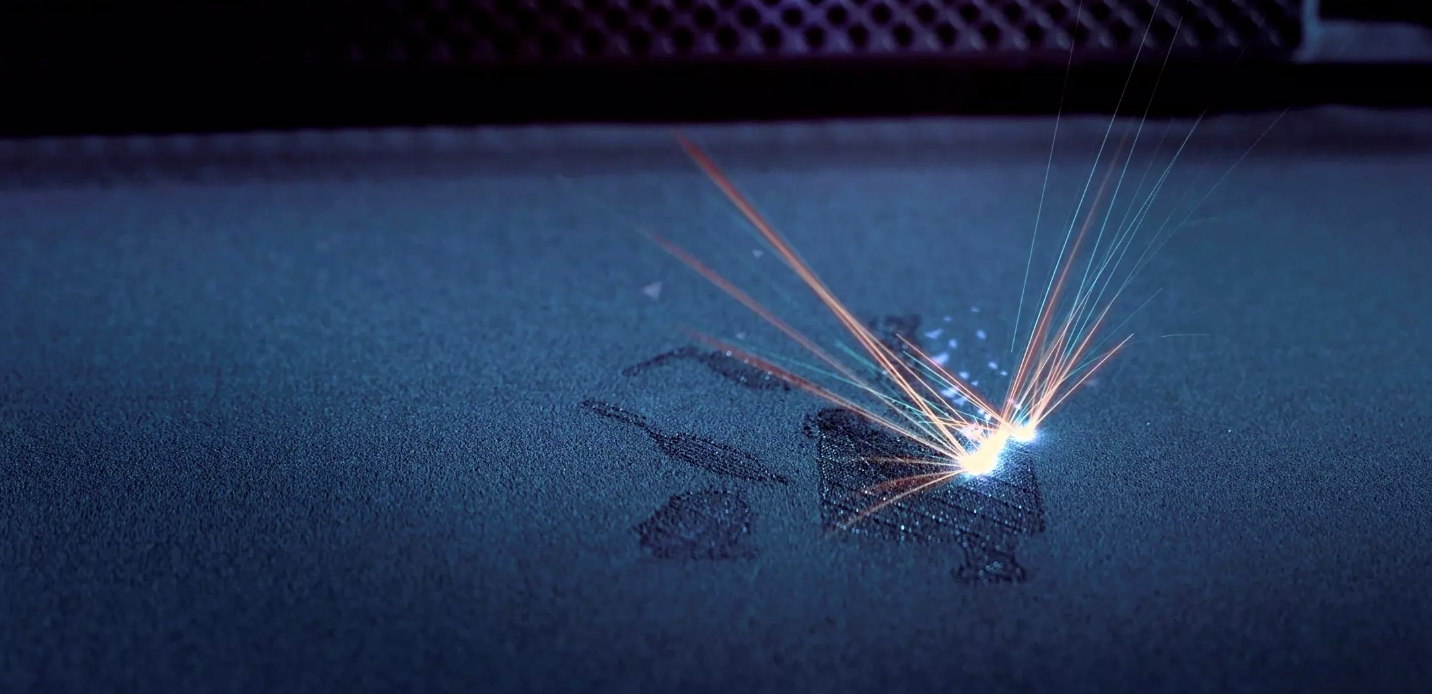
Image Source: Beyond Bynd
Metal Casting
Metal Casting is a traditional manufacturing process where molten metal is poured into a mold to create a desired shape. Once the metal solidifies, the part is extracted from the mold. This process is ideal for creating complex shapes and is widely used across various industries.
Metal Casting Process
A mold is made using a pattern that reflects the final part’s shape, often made from sand, metal, or ceramic. Metal is heated until it reaches a liquid state. The molten metal is poured into the mold through a channel called a sprue. The metal cools and solidifies within the mold. The solidified part, now called a casting, is removed from the mold. Excess material from the sprue and any imperfections are removed to finish the part.
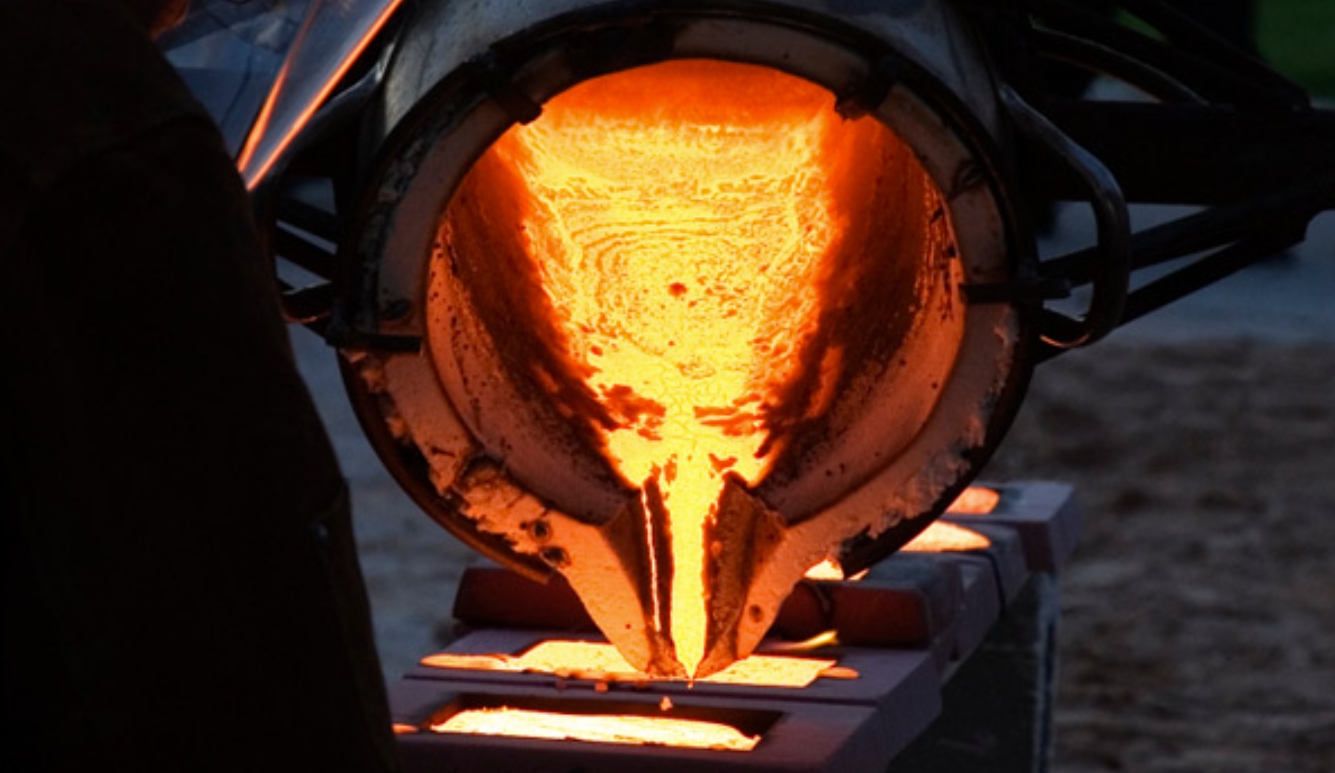
Image Source: Bernier Cast Metals
Metal 3D Printing vs Metal Casting: Materials
Metal 3D Printing Materials
● Stainless Steel: Known for its corrosion resistance and strength, stainless steel is used in various grades, such as 316L and 17-4 PH.
● Aluminum: 3D printed aluminum is widely used in aerospace and automotive industries for producing lightweight and durable components, such as aluminum 6061, AlSi10Mg, etc.
● Titanium: Favoured for its high strength-to-weight ratio and excellent corrosion resistance, making it suitable for aerospace and medical applications.
● Inconel: A family of nickel-chromium-based superalloys known for their ability to withstand extreme environments, commonly used in the aerospace industry.
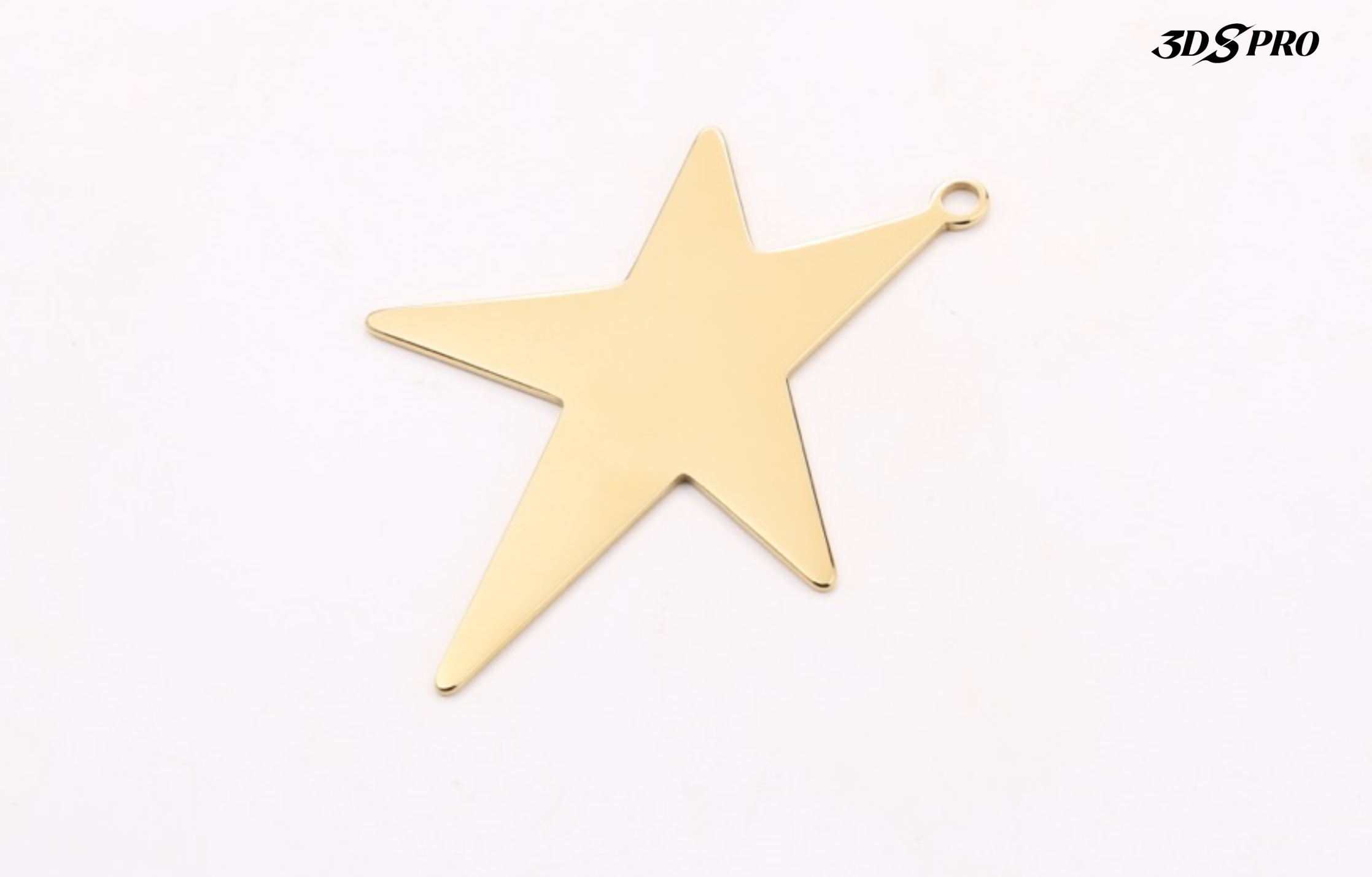
Check out SLM 3D Printing Material Guide HERE
Metal Casting Materials
● Gray Iron: Widely used for its good machinability and vibration damping properties.
● Ductile Iron: Offers improved strength and ductility compared to gray iron.
● Aluminum: Known for its lightweight and corrosion resistance, suitable for a wide range of applications.
● Steel: Offers high strength and durability, used in various industries.
● Copper: Highly conductive and offers good corrosion resistance, often used for electrical components.
Metal 3D Printing vs Metal Casting: Speed
Metal 3D Printing Speed
Metal 3D printing is known for its speed in producing complex parts, with some technologies capable of building parts at rates up to 100g/min. The time to print a part can vary based on several factors, including the size and complexity of the part, as well as the specific 3D printing technology used. For instance, Direct Energy Deposition (DED) tends to have the fastest build rate, followed by Binder Jetting (BJT) and Laser Powder Bed Fusion (LPBF).
Metal Casting Speed
Metal casting, while a traditional manufacturing process, requires a longer lead time compared to metal 3D printing. The speed of casting can be influenced by the type of metal, the complexity of the mold, and the size of the part being cast. Sand casting, one of the most common forms of casting, requires days, or even weeks, for production at high output rates.
In summary, metal 3D printing offers a significant speed advantage for producing small to medium-sized complex parts, particularly useful for prototyping and low-volume production. In contrast, metal casting is slower but remains a cost-effective solution for large-part production and high-volume runs.
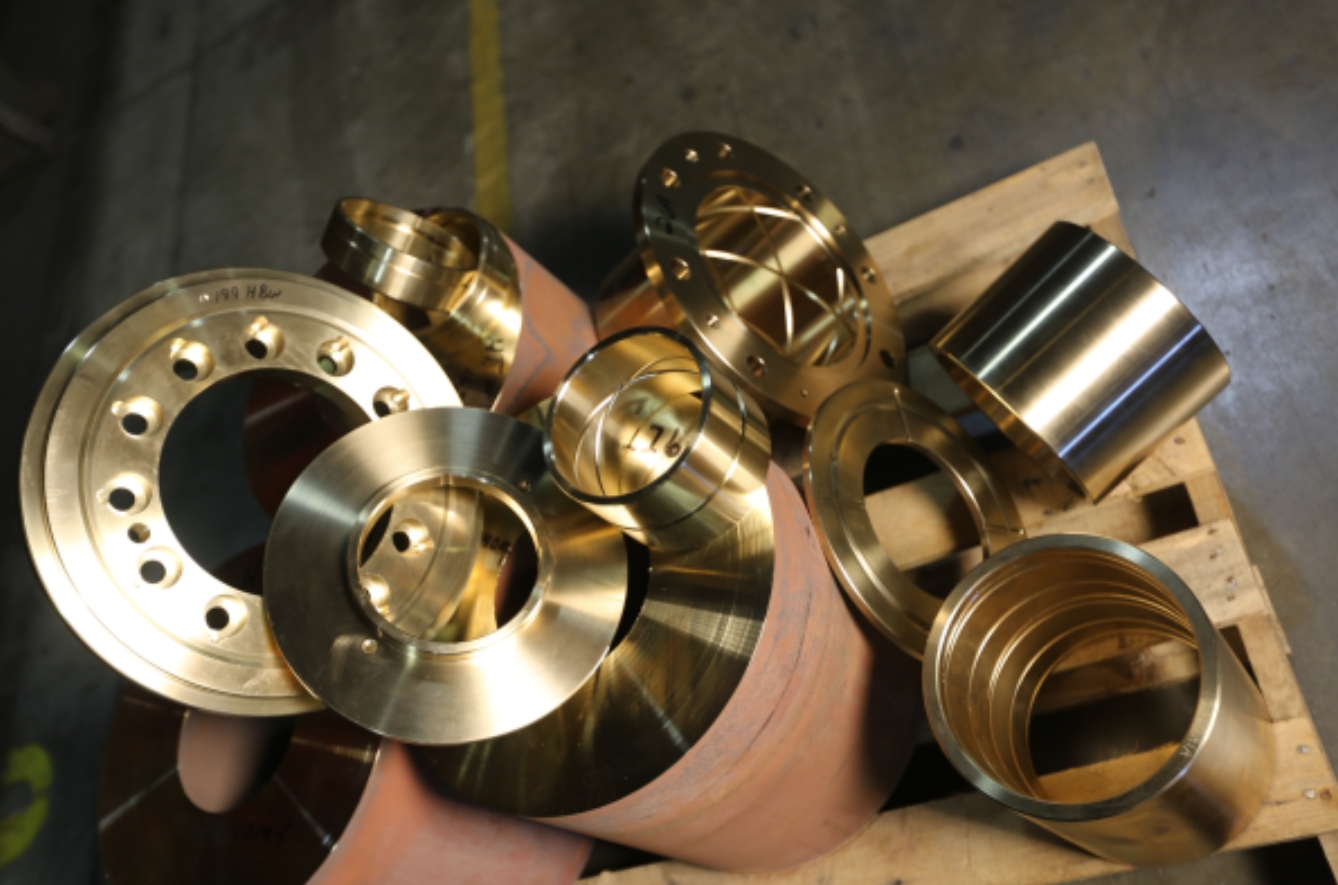
Image Source: American Iron
Metal 3D Printing vs Metal Casting: Mechanical Properties
Metal 3D Printed Parts' Mechanical Properties
● Tensile Strength: 3D printed metals can achieve high tensile strength, with some materials like stainless steel and titanium alloys exhibiting ultimate tensile strengths up to 1250 MPa.
● Elongation at Break: Depending on the material and printing process, 3D printed metals can have varying degrees of ductility, with elongation at break values ranging from a few percent to over 20%.
● Hardness: The hardness of 3D printed metals is comparable to their traditionally manufactured counterparts, with certain tool steels reaching hardness levels suitable for demanding applications.
● Fatigue Resistance: Metal 3D printed parts can exhibit excellent fatigue resistance, which is crucial for components subjected to cyclic loading.
Metal Casted Parts' Mechanical Properties
● Tensile Strength: Cast metals can have high tensile strengths, with alloyed cast irons and steels reaching up to 900 MPa.
● Elongation at Break: Cast parts generally have lower ductility compared to wrought materials, but ductile irons and certain cast steels can offer elongation at break values above 20%.
● Hardness: The hardness of cast metals varies widely, with some cast irons being naturally hard due to their microstructure, while cast steels can be heat-treated to achieve high hardness levels.
● Impact Resistance: Cast metals can be designed with good impact resistance, which is important for parts that must absorb energy during service.
Metal 3D Printing vs Metal Casting: Precision
Metal 3D Printing Precision
Metal 3D printing is highly regarded for its precision and ability to produce parts with complex geometries and fine details. The level of precision achievable with metal 3D printing can be as high as 35 microns, depending on the technology used. Some printers can achieve layer heights of up to 30 microns, allowing for very fine features. The dimensional accuracy for metal 3D printed parts is approximately ± 0.1 mm, which is suitable for most engineering applications. Metal 3D printed parts can achieve surface roughness as low as 1-3µm Ra, which often does not require additional finishing.
Metal Casting Precision
Metal casting, particularly precision investment casting, can produce parts with excellent accuracy and a good surface finish. The standard linear tolerance for investment casting is typically +/-.005 inch/inch, which varies based on the size and complexity of the part. The standard surface finish for castings is a 125 to 150 rms microfinish. Investment casting can achieve tight tolerances and high dimensional accuracy, making it suitable for parts with intricate details. The process allows for the production of components with a high-quality surface finish, reducing the need for post-processing.
Metal 3D Printing vs Metal Casting: Applications
Metal 3D Printing Applications
● Aerospace: Creating lightweight yet robust components that enhance aircraft performance and fuel efficiency.
● Medical: Producing customized implants and prosthetics tailored to individual patient needs.
● Automotive: Manufacturing precision-engineered parts that reduce weight and optimize vehicle efficiency.
● Tool Making: Crafting custom tools with integrated functions for various industry sectors.
● End-of-Arm Tooling: Developing specialized attachments for robotic arms used in manufacturing and surgery.
Metal Casting Applications
● Transport: Producing parts for automobiles, aerospace, railways, and shipping.
● Heavy Equipment: Creating components for construction, farming, and mining machinery.
● Machine Tools: Making parts for machining, casting, plastics molding, forging, extrusion, and forming.
● Plant Machinery: Supplying components for chemical, petroleum, paper, sugar, textile, steel, and thermal plants.
● Defence: Fabricating vehicles, artillery, munitions, storage, and supporting equipment.
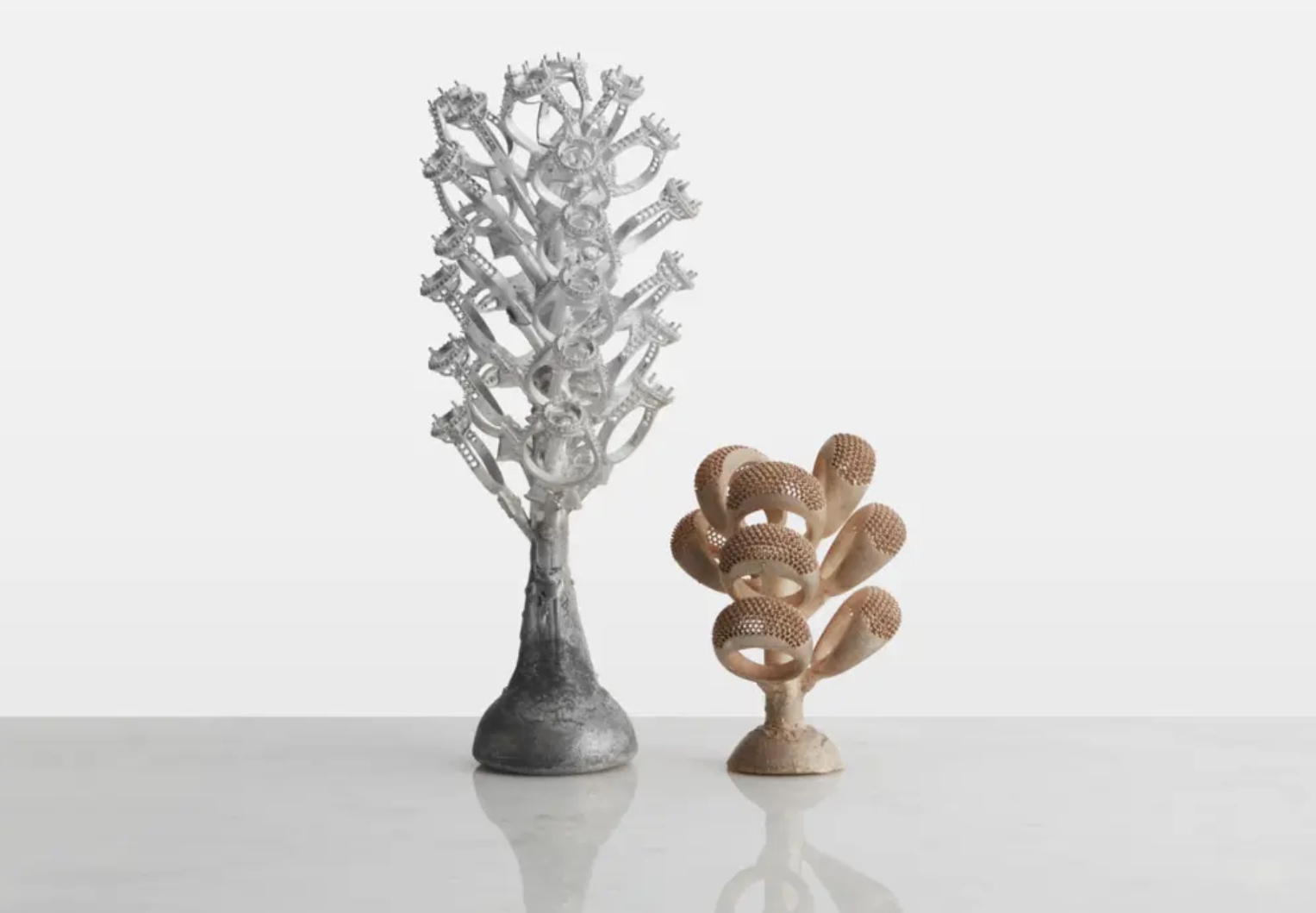
Image Source: Formlabs
Metal 3D Printing vs Metal Casting: Volume
Metal 3D Printing Volume
Metal 3D printing is increasingly being adopted for volume production. The technology is evolving to accommodate larger production runs, with metal 3D printing systems achieving production rates between 10-40 cm³/h. It is suitable for small-to-medium production runs, especially for complex parts where traditional manufacturing methods would be less efficient or cost-effective.
Metal Casting Volume
Metal casting is a well-established manufacturing process that excels at high-volume production. It is capable of producing millions of parts, with global casting production reaching 105.5 million metric tons in 2020. The process is particularly suited for large-part production and can handle a wide range of part sizes and complexities.
Metal 3D Printing vs Metal Casting: Cost
Metal 3D Printing Cost
● Equipment Costs: Industrial metal 3D printers range from approximately $30,000 to over $1 million for the most advanced systems.
● Material Costs: The materials for metal 3D printing, such as powders and wires, can vary significantly in price, from a few hundred dollars per kilogram for common alloys to much more for specialized materials.
● Operational Costs: These include energy consumption, maintenance, and labor, which can be higher due to the technical expertise required for operation and post-processing.
● Production Volume: While the cost per part decreases with larger production volumes, metal 3D printing is generally more cost-effective for small to medium-sized runs.
Metal Casting Cost
● Tooling Costs: Initial costs for creating molds can be significant, but these are amortized over the production run, making casting more economical at large volumes.
● Material Costs: The cost of raw materials in casting is generally lower than in metal 3D printing, especially when considering the economies of scale.
● Labor and Operational Costs: These can be lower than metal 3D printing due to the established nature of the process and the potential for automation.
● Economies of Scale: Casting is most cost-effective for high-volume production, where the per-part cost is reduced due to the large number of parts produced.
Make Metal Parts at 3DSPRO
At 3DSPRO, we specialize in making metal parts with our dedicated Selective Laser Melting (SLM) 3D Printing services. Our SLM solutions manufacture high-quality intricate metal parts that meet your exact specifications.
Why Choose 3DSPRO for SLM 3D Printing?
● Precision and Quality: Our SLM process ensures each part is built with the utmost precision, resulting in high-strength metal parts with complex designs.
● Material Variety: We offer a wide range of metal materials, including titanium, stainless steel, and aluminum, to suit different project requirements.
● Speed and Efficiency: With fast lead time, we ensure a swift turnaround for your projects.
● Various Surface Finishing Options: To enhance the appearance and functionality of your 3D printed parts, 3DSPRO provides a variety of surface finishing options, such as tumbling, polishing, spray painting, electrocoating, electroplating, annealing, anodizing, etc.
From prototyping to production, our team is here to support you through every step of the manufacturing process. Get in touch with us to start your 3D printing journey today!
